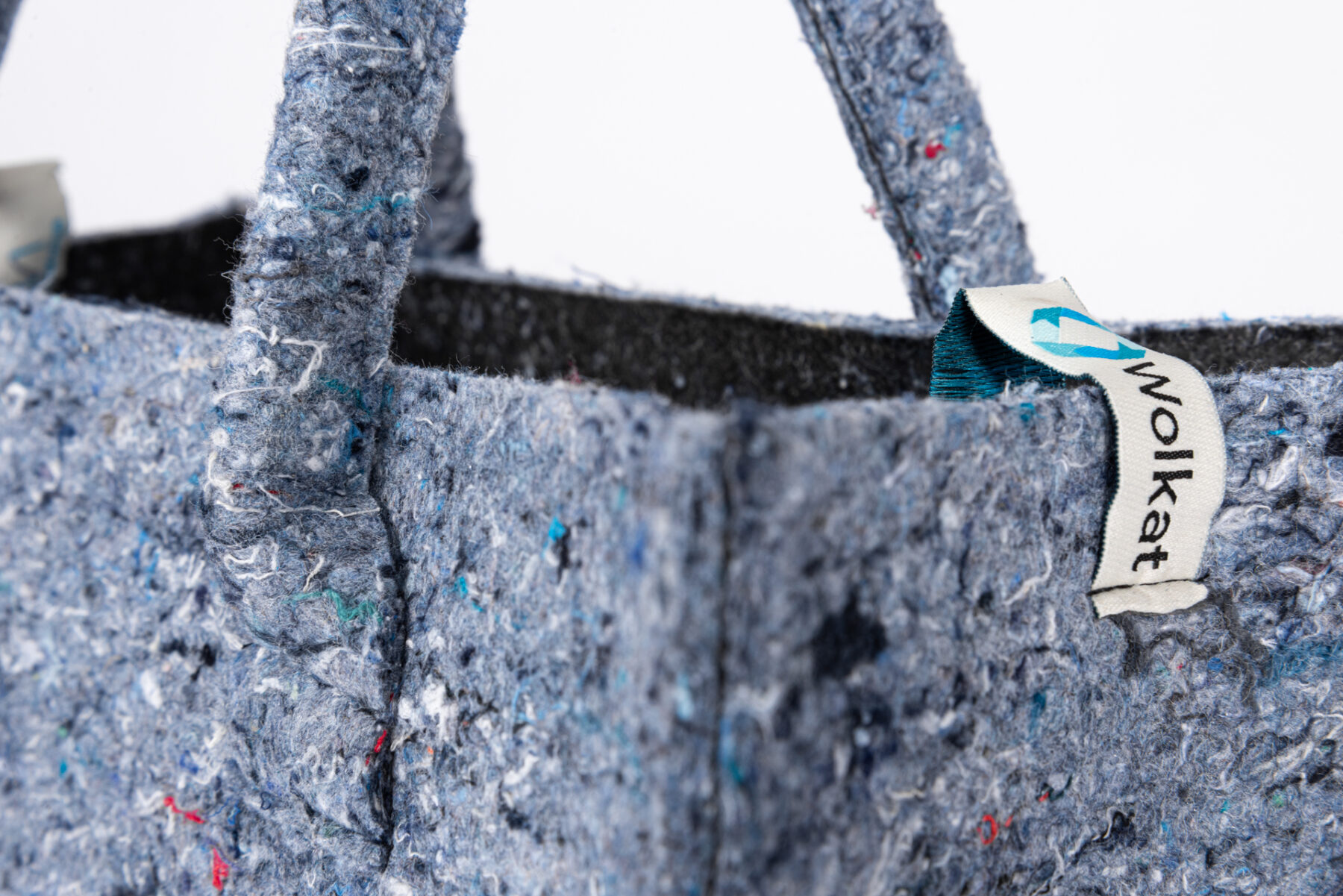The Power of Legislation –don’t just stick a label on it
We previously wrote about upcoming legislation to promote circular textiles in our position paper[1] to the House of Representatives in the Netherlands. Legislation may sound boring, but it is an important tool to transforming the textile chain from linear to circular and helping - and sometimes forcing - both companies and consumers towards a circular way of working.

Because Wolkat controls all steps in the supply chain for textile recycling (sorting, tearing, spinning, weaving, and offering new products), we must deal with a wide range of textile (waste) legislation, of which more than 15 are currently being developed or amended to promote a circular textile industry [2] [3] [4]. Much of this legislation is mainly applying to companies, but you as a consumer will also be (indirectly) affected by some new textile legislation coming up. In this blog and the upcoming blog, we will discuss the most important legislation for textiles that is under development and that you as a consumer will have to deal with if you buy something in Europe that is (partly) made of textiles.
Textile labeling rules
A textile product always needs to have a label mentioning the composition (% cotton, polyester, etc.) and possibly the laundry instructions[5]. Whether the composition on that label information is always correct is doubtful, as shown by previous research by Circle Economy[6], this is mainly due to the many different parties involved in the production of a garment.
In the coming years, the current Textile labeling rules[7] will be revised, whereby companies that sell textile products on the European market must indicate the entire production chain in addition to the composition. This is probably done by means of a so-called Digital Product Passport[8]. In this way, consumers are better informed and, through transparency and traceability of the textile product, you as a consumer can make better informed sustainable choices about what you do and do not want to buy.
Green Claims Directive
You might have seen it on products; labels that show and indicate how “green” a product is. Due to the large number of sustainability claims that are used, it might be difficult for consumer to know all of them. In addition, fake labels are used or there are companies that create their own label to project a sustainable image[9].
The concept of sustainability has – unfortunately – become an all-purpose word. With the Green Claims Directive[10] and Product Environmental footprint methods[11], the European Union wants to regulate this more and oblige all brands that place textiles (and other products) on the European market to use the same lifecycle method for indicating the sustainability of their product. This way you as a consumer can honestly compare apples with apples.
Both the revision of the Textile labeling rules and the Green Claims Directive will come into place sometime between 2024 and 2026. So, you need to be patient for a while. Until then, you can check your favorite brand on the Good on You website, where clothing brands are ranked by Planet, People and Animal welfare[12]. In general, always be critical of what you buy and the labels and information on or attached to your textile product.
[1] Commissie Infrastructuur en Waterstaat rondetafelgesprek, Kansen en uitdagingen verduurzaming kledingindustrie https://www.tweedekamer.nl/debat_en_vergadering/commissievergaderingen/details?id=2023A00813
[2] EU Strategy for Sustainable and Circular Textiles, https://single-market-economy.ec.europa.eu/sectors/textiles-ecosystem/strategy-textiles_en
[3] European Commission, Directorate-General for Internal Market, Industry, Entrepreneurship and SMEs, Transition pathway for the textiles ecosystem, Publications Office of the European Union, 2023, https://data.europa.eu/doi/10.2873/86186
[4] Full overview of the EU textile strategy and regulations, oktober 2023, https://www.carbonfact.com/blog/policy/eu-regulations-for-textile-brands
[5] Labelling of clothing, Netherlands Enterprise Agency, RVO, https://business.gov.nl/regulation/labelling-clothing/
[6] Clothing labels: accurate or not, Circle economy 2020, https://www.circle-economy.com/resources/clothing-labels-accurate-or-not
[7] Textile labelling rules (revision, European Commission, https://ec.europa.eu/info/law/better-regulation/have-your-say/initiatives/13872-Textile-labelling-rules-revision-_en
[8] Digital Product Passport – on the way to circular economy, textile technology 2023
[9] Labels duurzaamheid kleding, duurzame kleren, https://duurzamekleren.com/duurzame-kledingkeurmerken-en-labels
[10] Proposal for a Directive on Green Claims https://environment.ec.europa.eu/publications/proposal-directive-green-claims_en
[11] Environmental footprint methods, European Commission, https://green-business.ec.europa.eu/environmental-footprint-methods_en
[12] Thousands of rated brands, Good on you, https://directory.goodonyou.eco/?_gl=1*1rrqiqh*_ga*MTM5MjE1NDQxMi4xNzAwMTQwODQ0*_ga_TTB1J3Q9MN*MTcwMDE0MDg0NC4xLjEuMTcwMDE0MTEzMS42MC4wLjA.&_ga=2.175963874.1330378452.1700140844-1392154412.1700140844